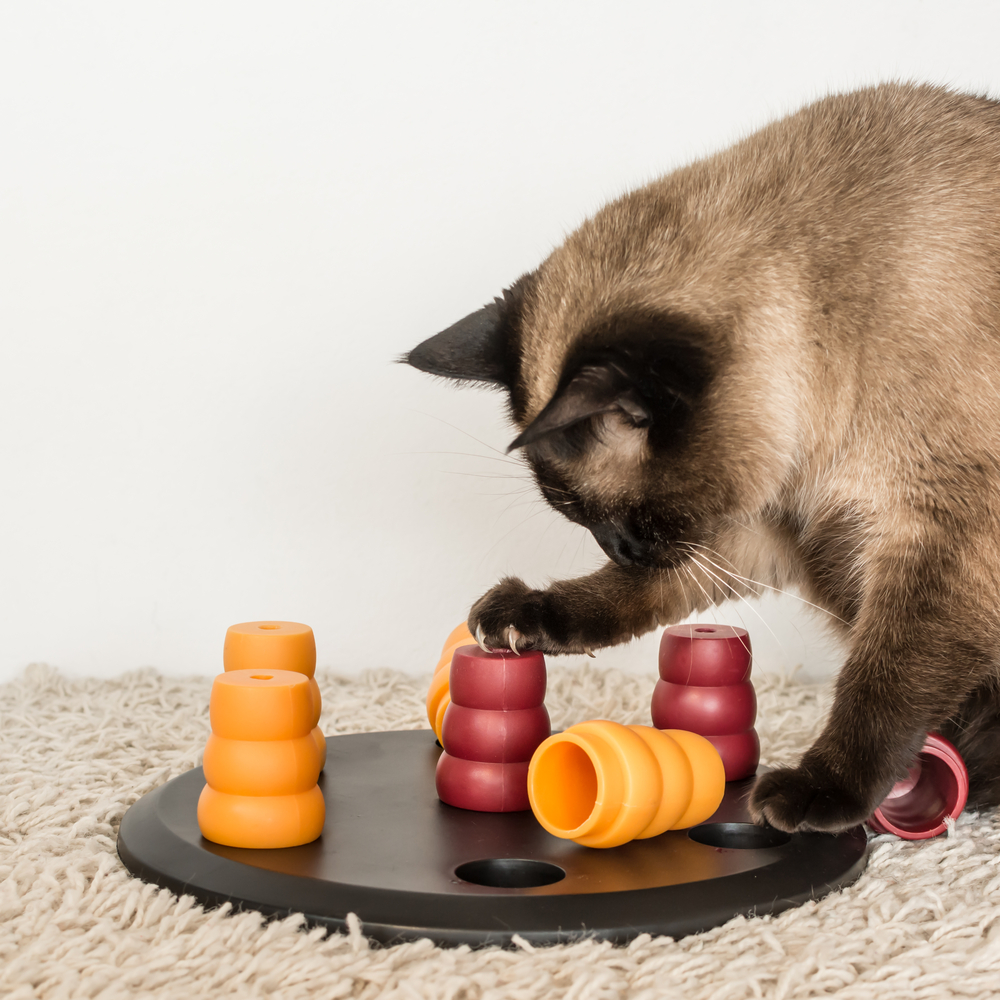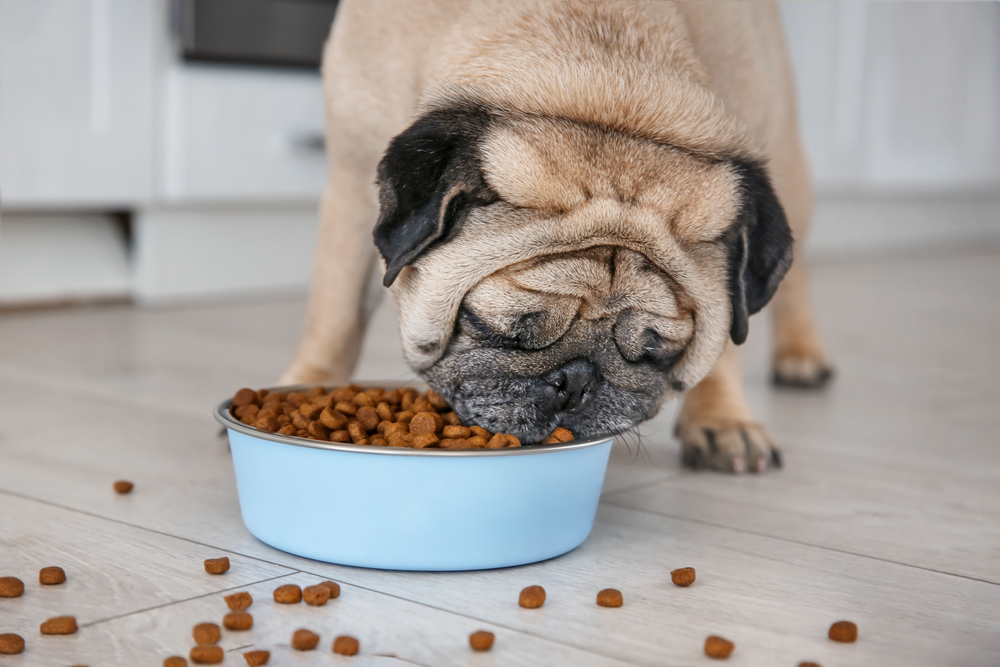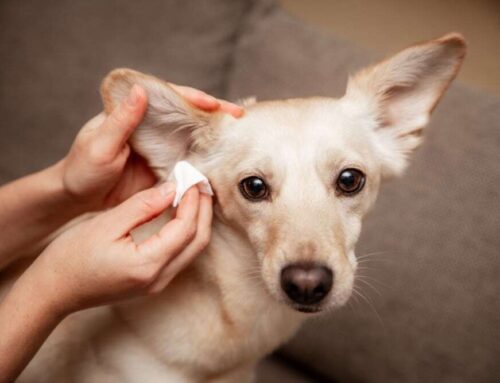According to the Association for Pet Obesity Prevention, a staggering 59.5% of cats and 55.8% of dogs were classified as overweight or obese in 2018. Clearly, maintaining pets at an ideal weight is a big problem in the United States, yet one of the most important things you can do for your pet’s health and longevity is to keep her at her ideal body weight. Turning down your furry friend’s begging eyes when you rip into a bag of chips can be challenging, but you have control over your pet’s weight, and can allow her to reap the benefits and the longer lifespan a healthy weight grants.
With so many pets carrying extra pounds, is the battle of the bulge a losing fight? Fear not—many resources are available to help keep your pet sleek and trim. Try these tips.
#1: Schedule a veterinary appointment
If your pet is packing on the pounds, but still eating the same amount of food, she may have a medical issue. While disease is not always the cause, a thorough physical exam and baseline blood work can rule out any metabolic or endocrine disease that can affect your pet’s metabolism. Hypothyroidism and Cushing’s disease are relatively common conditions in older dogs that can cause weight gain, despite a diet plan. Heart disease, and tumor formation, can cause fluid retention in the abdomen, making your pet appear bloated. Cats may suffer from feline infectious peritonitis, another condition in which fluid accumulates in the abdomen. While diabetes is often thought to cause weight gain, it’s actually the by-product of obesity, and many chunky kitties develop diabetes. Many of these diseases can be managed with medication and diet, allowing your pet to live a happy, comfortable life.
In addition to searching for causes of weight gain, we will determine your pet’s body condition score and form a diet and exercise plan to help her shed extra pounds. Based on your pet’s food and activity level, we can calculate the recommended calories needed for your pet to lose or maintain weight.
#2: Get your groove on
In Florida, we cannot use frigid winter conditions as an excuse to not get out and exercise with our pets. If temperatures drop to a chilly level, you can still get moving and encourage activity with your pet indoors in the following ways:
- Teach new tricks or skills with daily training sessions.
- Create indoor agility courses, using toys as lures to lead your pet through the course.
- Build a kitty paradise of climbing towers and lofty perches to appeal to your cat’s desire for high vantage points.
- Take a new walking route through the neighborhood or switch up hiking trails for a more difficult path.
- Line a scratching post with Feliscratch or catnip to entice your cat to stretch and scratch while caring for her nails.
#3: Actually measure your pet’s food
Admit it—you fill your pet’s food dish when she caterwauls at you in the middle of the night or licks your face, so you can get some peaceful shuteye. Those midnight calories, and other calories that don’t get counted, add up quickly. Once you know your pet’s caloric requirement, divide her daily allotment into meals, leaving no more than 20% of her calories for treats. Measure the amount of food accurately with a measuring cup—not a coffee cup, not a Tupperware container, not a handful. It’s too easy to overfeed when eyeballing a half a cup of food.
#4: Think carrots, not chips
Although people and pets love pizza, donuts, and chips, healthy food choices lead to a healthy weight. Instead of sharing a slice of triple-meat pizza with extra cheese, toss her a carrot. It may seem cruel, but your pet will be happy to get even a healthy treat. Many commercial pet treats are full of sugar, so check the calorie content, and consider using fresh veggies and lean meats as treats instead.
#5: Make your pet work for it

What a wonderful life—snooze in the sunny windowsill all day, yowl at your human slave for food, and chow down at a never-ending buffet of kitty kibble. It’s no wonder many cats are overweight. Cats are designed to eat many small meals throughout the day as they hunt for their prey, expending almost as many calories hunting as they consume. Make your pet work for her meals by using food puzzles or hiding kibble throughout your home.
Although your chunky kitty or pudgy pooch is adorably squishy, those extra pounds can harm her health. Give us a call to schedule a nutritional consultation to work out a diet and exercise plan.







Leave A Comment